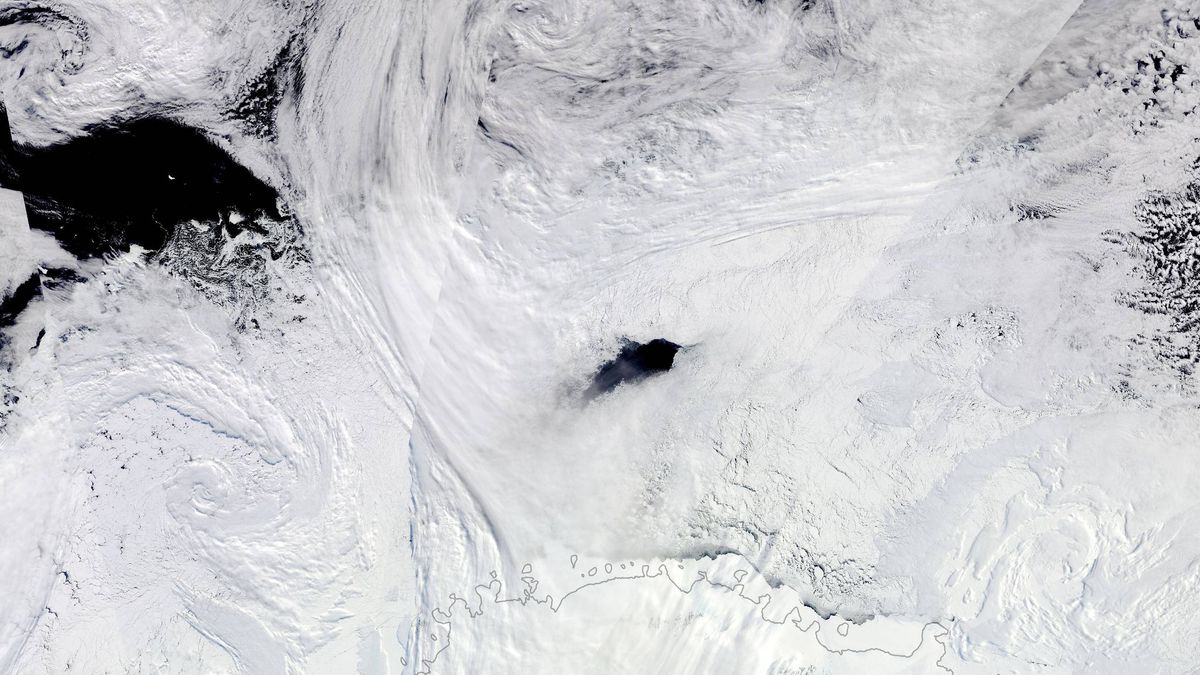Understanding the Maud Rise Polynya: An Exploration of Antarctic Sea Ice Phenomenon
Antarctica, the southernmost continent on Earth, experiences a remarkable transformation during its winter months. A vast expanse of sea ice surrounds the landmass, nearly doubling its size. However, in the winters of 2016 and 2017, a rare occurrence disrupted this frozen expanse – a massive hole known as a polynya emerged in the midst of the sea ice, comparable in size to Switzerland. Termed the Maud Rise polynya, this intriguing feature has puzzled scientists for years, and recent research has shed light on its mysterious formation.
The Genesis of the Maud Rise Polynya
Named after the underwater mountain located beneath it in the Weddell Sea, the Maud Rise polynya is a product of a complex interplay of factors. A recent study has revealed that a unique combination of wind patterns, ocean currents, and underwater topography converged to create the optimal conditions for the formation of this remarkable opening in the sea ice.
While the Maud Rise polynya first caught the attention of scientists in the 1970s when it was detected by Earth-observing satellites, its reappearance has been sporadic and brief. However, the winters of 2016 and 2017 marked a significant event, as the polynya resurfaced on a larger scale than seen in decades past.
Insights into the Formation Mechanism
Researchers attribute the resurgence of the Maud Rise polynya to a strengthening of the circular ocean current in the Weddell Sea during the aforementioned winters. This intensified current facilitated the upwelling of warmer, saltier water near Maud Rise, contributing to the melting of the sea ice.
Despite the freshening of the surface water resulting from sea ice melt, the polynya persisted, indicating an additional salt source. Through a meticulous analysis of data collected from satellites, autonomous floats, and marine mammals, the research team identified turbulent eddies around Maud Rise that brought in additional salt. This salt was then transported to the surface through the process of Ekman transport, where water movement influenced by wind patterns played a crucial role.
Impact and Implications
Understanding the dynamics of polynyas like the Maud Rise polynya has far-reaching implications beyond the Antarctic region. These openings in the sea ice can alter ocean currents, affect heat distribution, and have long-lasting effects on global ocean circulation. The dense waters formed in these regions can influence water movement and heat transfer on a planetary scale, highlighting the interconnected nature of Earth’s ocean systems.
The findings of the study, published in the journal Science Advances, offer valuable insights into the complex mechanisms at play in the formation and persistence of polynyas such as the Maud Rise polynya. By unraveling the mysteries of these enigmatic features, scientists are better equipped to comprehend the intricate interplay of factors shaping the Antarctic environment.
Image/Photo credit: source url





